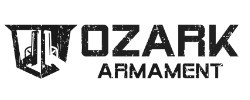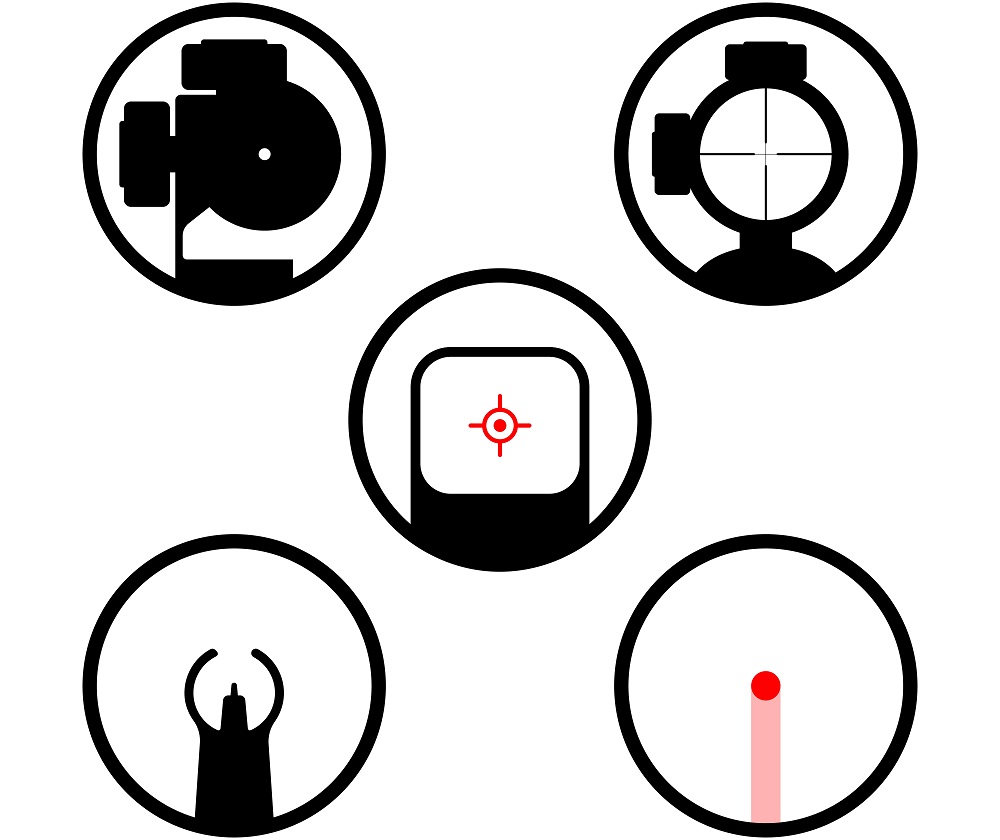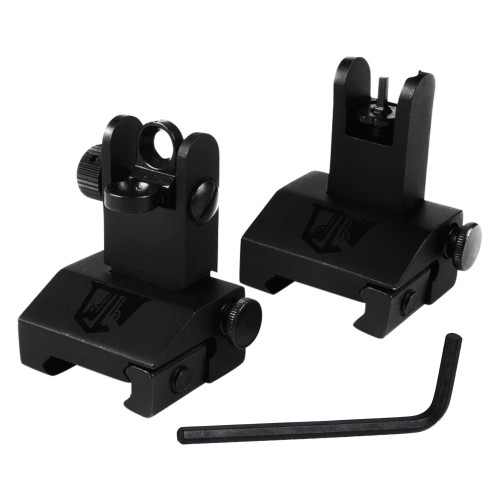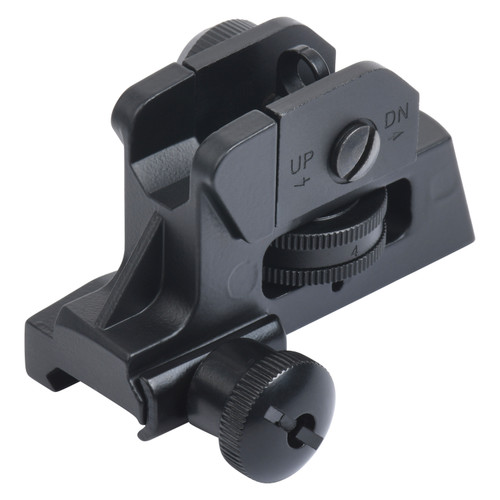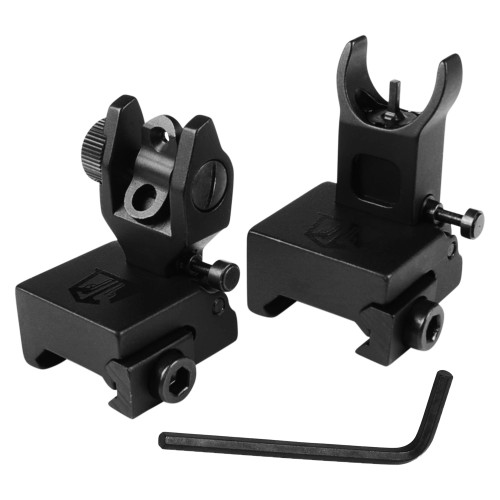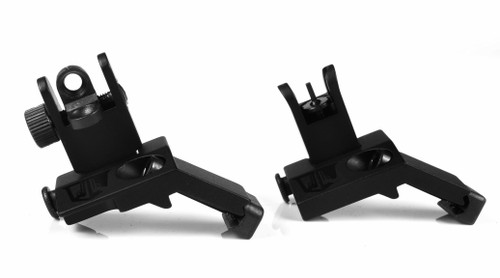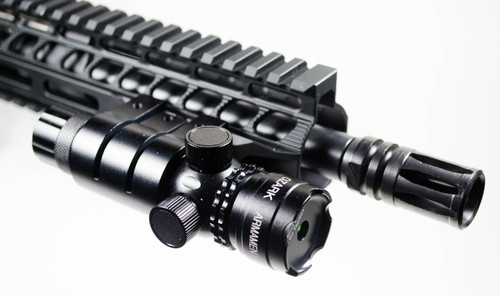Posted by Matt Rice on Jun 15th 2022
Absolute vs Lower 1 3 Co Witness Guide - OZARK ARMAMENT
Co-Witnessing Sights: Straight Talk from a Fellow Shooter
Hey there, gun buddies! It's me, your friendly neighborhood firearms enthusiast. Today, we're gonna chat about something that's been buzzing around the shooting community lately: co-witnessing sights. Now, I know what you're thinking - "Oh great, another boring technical lecture." But hold your horses! I promise this'll be as painless as breaking in a new holster. So grab your favorite beverage, kick back, and let's dive in.
What the Heck is Co-Witnessing Anyway?
Alright, picture this: You're at the range, showing off your sweet new AR. You've got this fancy red dot sight perched on top, but you've also got those trusty fixed iron sights. Now, you might be wondering, "Do these things play nice together, or what?" That, my friends, is where co-witnessing comes in.
In simple terms, co-witnessing is like making your iron sights and red dot sight shake hands and agree to work together. It's a way to make sure that if your battery-powered sight decides to take a siesta, you're not left squinting at your target like a nearsighted squirrel.

The Two Flavors of Co-Witnessing
Now, stick with me here, 'cause this is where it gets interesting. There are two main ways to set up your co-witness: absolute and lower 1/3. Let's break 'em down.
Absolute Co-Witness: The "Perfect Alignment" Setup
Imagine you're lining up to take a shot, and your iron sights and red dot are so in sync, they could start a boy band. That's absolute co-witness for ya. When you look through your sight, the iron sights are smack dab in the middle, like they're photobombing your red dot.
Pros:
- If your red dot croaks, you're still in business
- Your rifle stays sleek, like a supermodel on a catwalk
- Switching between sights is smoother than your pickup lines
Cons:
- Your sight picture can get a bit crowded, like a mosh pit at a metal concert
Lower 1/3 Co-Witness: The "High and Mighty" Option
Now, picture this: your red dot is living it up in the penthouse suite, while your iron sights are chilling in the lobby. That's lower 1/3 Co witness in a nutshell. Your iron sights hang out at the bottom of your view, leaving more room for your target.
Pros:
- Clearer sight picture, like watching a movie without someone's big head in front of you
- Great for guns with fixed sights (I'm looking at you, AK lovers)
- Less neck strain, 'cause who needs more aches and pains, right?
Cons:
- Might take some getting used to, like that first time you tried spicy food
- You'll need a taller mount, which means shelling out a few more bucks
Which One's Right for You?
Look, I'm not gonna sit here and tell you which one to pick. That'd be like me telling you what your favorite beer should be. It's a personal choice, ya know? But here are some quick tips from yours truly:
- If you've got an AR with flip-up sights, absolute co-witness might be your jam.
- Rocking fixed iron sights? Lower 1/3 could be the ticket.
- No iron sights at all? You maverick! But stick with absolute height for your red dot.
Setting Up Your Co-Witness: No Rocket Science Required
- Zero your sights first. Trust me on this one.
- Slap on your optic and make sure you can see what you need to.
- Take a few shots. You know, for "testing purposes."
- Line up your red dot with your iron sights. It's like matchmaking, but for gun parts.
- Test fire and tweak if needed. Easy as pie, right?
Why Bother with All This Co-Witness Jazz?
Picture this: You're out in the sticks, your red dot's battery just bit the dust, and a trophy buck waltzes by. With co-witnessed sights, you're still in the game, baby! It's like having a backup parachute, but for your aim.
Plus, let's be honest, it looks cool. And in our world, that counts for something, doesn't it?
The Bottom Line
Alright, let's bring it home. Co-witnessing isn't some dark art or secret handshake. It's just a smart way to set up your sights so you're always ready to rock and roll. Whether you go absolute or lower 1/3, you're setting yourself up for success.
Remember, at the end of the day, the best setup is the one that feels right to you. So get out there, try both, and see what clicks. And hey, if all else fails, you can always blame your misses on the wind, right? (Just kidding, don't be that guy.)
Happy shooting, friends! May your aim be true and your magazines always full. Catch you on the range!
Article Written By Matt Rice, Owner Operator of OZARK ARMAMENT Matt Rice is the founder and owner operator of OZARK ARMAMENT. He started the company in 2016 with a vision to bring quality, affordable firearm accessories to every person who wants to improve their shooting experience. With his dedication to providing old-school customer service and his attention to detail in the development and manufacturing of gear, Matt has helped OZARK ARMAMENT become a respected name in the firearm accessories industry.
